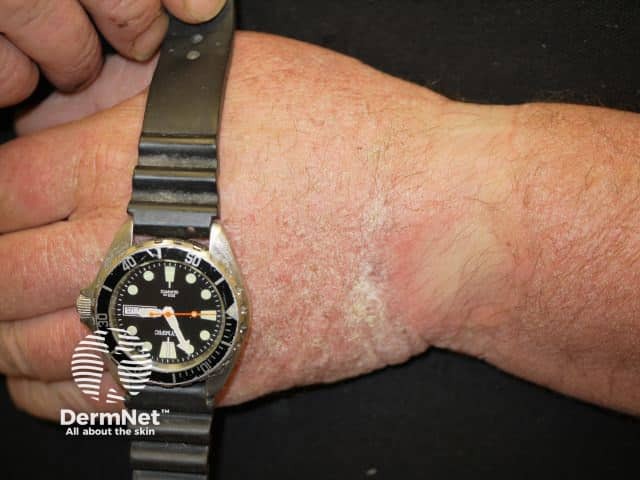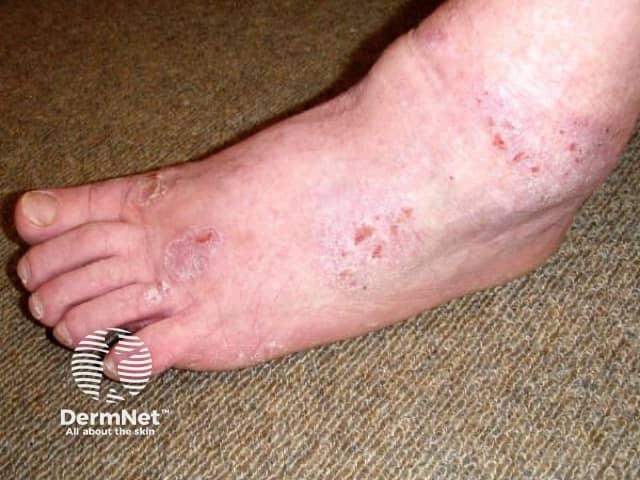Main menu
Common skin conditions

NEWS
Join DermNet PRO
Read more
Quick links
What is diethylthiourea and where is it found? Clinical features Diagnosis Treatment Prevention Alternative names Further information
Diethylthiourea is part of the allergen group referred to as mixed dialkyl thioureas. The other thiourea included in this group is dibutylthiourea.
Thiourea derivatives are added to neoprene rubber products such as wet suits for diving, rubber weather stripping, neoprene rubber gloves, orthopaedic knee and elbow sleeves, swim goggles, waders for fishing, insoles of athletic shoes, and keyboard wrist supports. Adding diethylthiourea speeds up the vulcanization of neoprene rubber which makes the rubber more stable, tougher and more pliable so it can be shaped and formed into different products. Industrial uses of diethylthiourea are found in anticorrosive compounds, detergents, fungicides and insecticides, some polyvinyl chloride adhesives, and in diazo copy paper which is used for industrial textile patterns and architectural plans.
Mixed diakyl thioureas were declared the Contact Allergen of the Year for 2009 by the American Contact Dermatitis Society (ACDS).
In diethylthiourea allergic individuals, contact with diethylthiourea produces classic allergic contact dermatitis.
The dermatitis is usually confined to the area of the neoprene rubber product. For example, in two reported cases of occupational allergic contact dermatitis from trolley handle padding made of neoprene rubber, both patients had vesicular dermatitis on their palms, fingers and wrists. However, footwear is the most common source of diethylthiourea allergy whereas gloves are the most common occupational source.

Contact dermatitis due to neoprene and diethylthiourea allergy

Contact dermatitis due to neoprene and diethylthiourea allergy

Contact dermatitis due to neoprene and diethylthiourea allergy
Diethylthiourea allergy is diagnosed by performing special allergy tests, i.e. patch tests. Concentrations of 1.0% diethylthiourea in petrolatum can be used for patch testing.
The number of cases of contact allergy to diethylthiourea reported in the literature is relatively small. Targeted patch testing with diethylthiourea and retrospective analysis has shown that patients with a history of neoprene rubber dermatitis react positively and stongly to diethylthiourea 1%.
Confirmation of diethylthiourea allergy requires the removal of the causative agent and then management as for any acute dermatitis/eczema; this may include treatment with topical corticosteroids and emollients.
Patients with diethylthiourea allergy should avoid contact with neoprene rubber products. Your dermatologist may have further specific advice, particularly if you are highly sensitive to diethylthiourea.
Formula: C5H12N2S
CAS number: 105-55-5
Cross reactions:
Appearance: white solid
Sensitizer: diethylthiourea
Patch Test: 1.0% diethylthiourea in petrolatum